Reviews are an essential part of marketing, and editorial reviews are no less important. Like Amazon book reviews that you may garner from readers, editorial reviews help you with your book listing, create social proof and buzz on social media, and provide credibility for your book.
An honest review that praises your book can be just the nudge a potential reader needs to purchase.
However, just as it’s difficult to make those first book sales, it can be difficult to get quality, five-star reviews. It requires some additional work. But most authors would agree it’s well worth it. So we’re showing you just how to do it.
For a deeper dive into editorial reviews, how to get one, and why they are such a powerful tool, keep reading.
What is an editorial review?
An editorial review acts as an endorsement of your work. If a big-name author, blogger, influencer, or expert in the field of your genre leaves an editorial review, this will likely garner the attention of potential readers. Similarly, a trade review would be a genuine book review from a professional inside the industry, such as a publisher, bookseller, librarian, trade publication, esteemed doctor, or other similarly qualified individual.
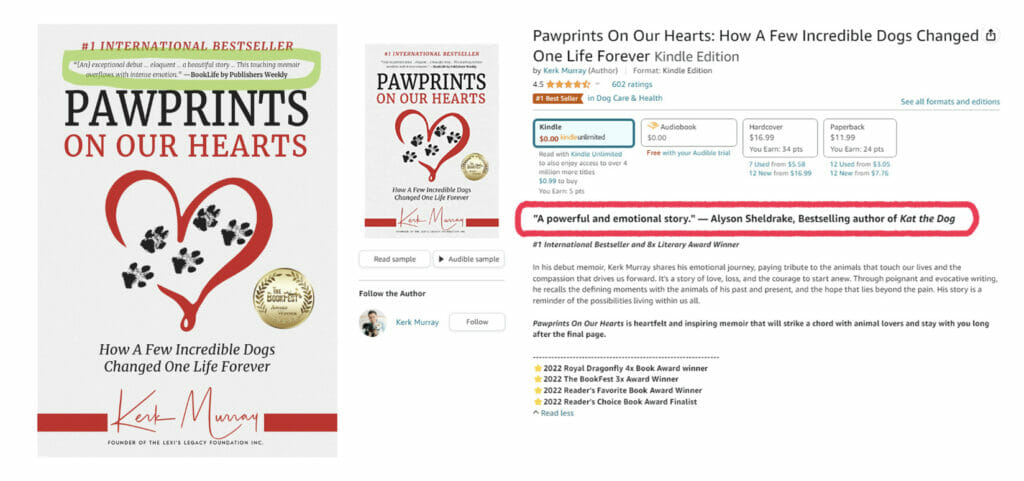
According to Tough Nickle, “An editorial review is an objective, third-party review of a book by a professional editor, columnist, critic, or other authority in the book’s genre or topic.” While customer reviews may show bias, editorial reviews should not. Remember this as you consider who you want to leave an editorial review.
Similar to an endorsement, an editorial review will likely be done prior to the book release date or book launch party – or soon after. As you can see in the example above, editorial reviews can become a part of your book cover and Amazon listing. This might be the first review a potential reader sees, as reader reviews can’t be published until release day.
Author Jane Friedman sums it up: “Pretty much anything and everything is allowed in the editorial reviews section. That’s because editorial reviews and customer reviews are two completely separate things. Customer reviews are written by people who have bought your book and is thus a fiercely guarded component of Amazon. Whereas editorial reviews are written by people who’ve received your book and agreed to do a review for you.”
Why does an editorial review matter?
If someone leaves an editorial review, they’re likely more familiar with the topic of your book. If you write a book on your personal journey to healthy living, someone in the medical field could leave an editorial review. Generally speaking, these people are well-versed in the topic, have a genuine interest, and are equipped to leave a review with more insight than the pleasure reader.
For instance, if Jane Smith leaves a glowing editorial review of your young adult dystopian, readers will be encouraged to read it. However, if Veronica Roth (Divergent) or James Dashner (Maze Runner) leaves an editorial review on your book, readers will view it differently.
These authors are credible in the young adult fiction genre and have sold many books. Their reviews carry a bit more weight than the average reader’s.
Note: While editorial reviews provide more credibility to a book, customer reviews are still helpful and should be pursued. Each type of review has a different purpose and is important in different ways.
That said, let’s move on to the how of getting editorial reviews.
How to get an editorial review
The first thing you must do is consider who you want to leave an editorial review. Then, you will pursue editorial reviews in much the same way you pursue blurbs.
Research books you love and look through their reviews. Is there a particular review that sticks out to you? Look the person up. Is there a certain author you love? Reach out. Don’t flatter them, but communicate that you enjoy their work and would be honored if they would leave an editorial review for your book. If they agree, send a free copy or PDF version.
Goodreads, TikTok, Instagram, and Twitter are great places to find like-minded individuals who have a substantial following. Browse through hashtags and following lists to find influencers who represent the type of book you’ve written. Engage with them (don’t be spammy) and reach out.
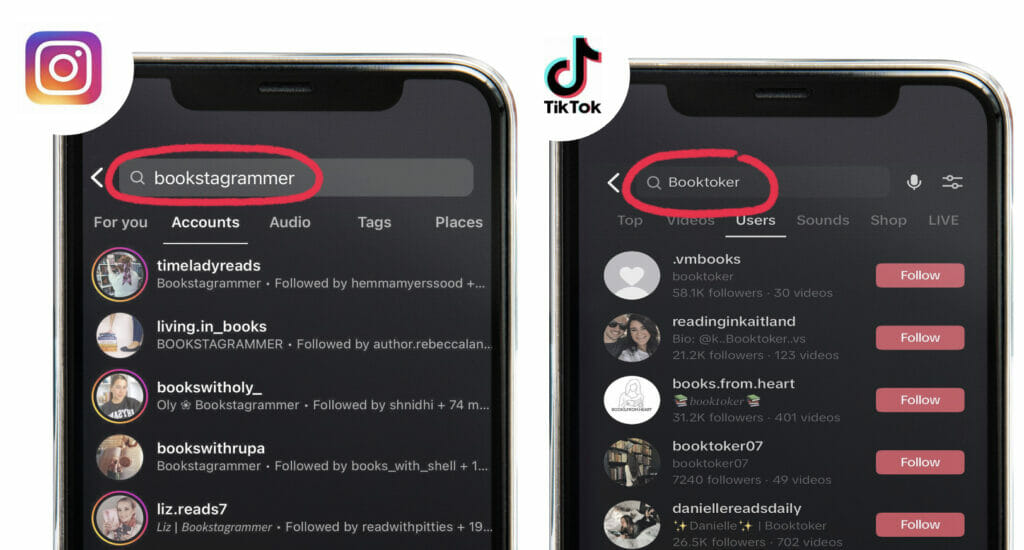
Don’t be afraid if someone says no or doesn’t respond. The important thing is you’re trying. The more people you ask, the higher your chances of getting a yes.
If social media doesn’t get you the responses you hoped, don’t forget about author websites. Not only will you be able to post future editorial reviews on yours, but you can use other authors’ sites as a way to connect with potential reviewers. Most authors have a contact form or their agent’s email listed. In a concise way, explain who you are and what you are asking. Don’t pressure them, but don’t be afraid to ask.
Want more ideas? As a part of our Author Advantage Accelerator and other online book publishing programs, we provide self-published authors a list of some of the most reputable sources for acquiring editorial reviews. And we share scripts to help increase their chances of success.
Here are two insider tips our most successful authors have used:
Use a template to speed up the outreach process
Ideally, after some research, you will have a substantial list of potential editorial reviewers. While you definitely want to personalize your messages to the individual, creating a generalized template can be a big time saver.
You can create a generalized outreach template to work from, customizing it based on the person you are reaching out to.
Think about five lines. A nice greeting. A brief introduction and note about why you respect their work. Context about your upcoming book and what it’s about. Your ask (aka: an editorial review). And, finally, a polite closing.
Below is a rough template to get you started:
Hello [Name],
My name is
and I enjoyed your book [Title]. The [insert details] […]. [Your Book’s Title], my [debut novel or nonfiction] releases Fri, 01 Nov 2024 16:13:17 +0000. It is about [elevator pitch].I would be honored if you would leave an editorial review.
Thank you for your consideration,
[Name]
Work from this template, or create your own, to speed up your process in solidifying your editorial reviews. Don’t forget to include a compelling subject line!
Engage your existing audience
If you’ve been documenting your author journey or sharing any excerpts while writing your book, opportunities for editorial reviews may come to you!
Take advantage of people sharing or commenting on your posts on social media. If someone expresses interest in your book, reply directly to their comment and ask them if they’d like an advance copy in exchange for an honest review.
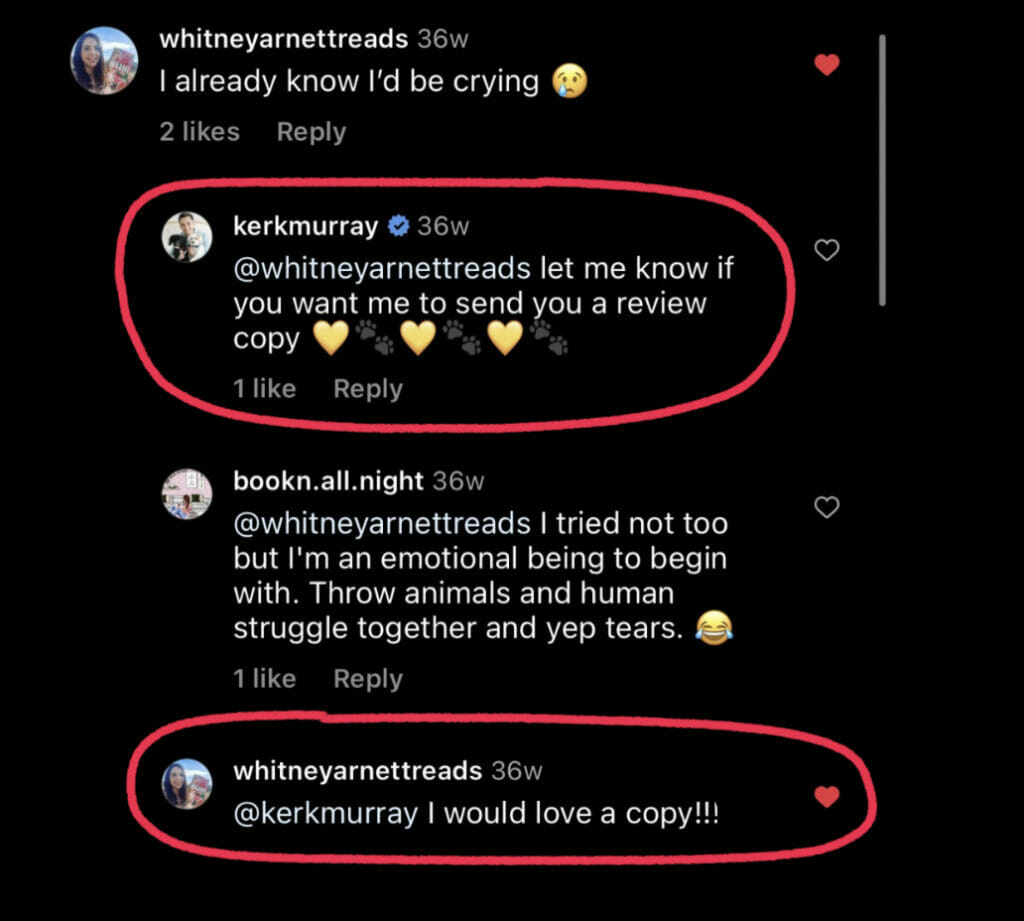
You might be surprised at how many people are excited about the book you are writing. If your book launch is coming up, it’s really important to continue sharing news about it on all your social media platforms.
You never know which friends, family, co-workers, and friends of friends would resonate with the topic.

Obtain written permission
As you collect your editorial reviews, be clear about where and how you will share the review in your book marketing (more on that in a bit). Make sure you have their written permission to use their review. This can be in the form of an email, social media message, or signed form. You must also follow the guidelines and publish the review as-is (no editing or rephrasing without the reviewer’s written consent).
Consulting a professional who works in this field is an invaluable step before making your editorial reviews public.
Have a budget for editorial reviews
The cost of an editorial review is dependent on the reviewer. Chances are, you can find multiple authors and writers who would happily write up an editorial review at no charge.
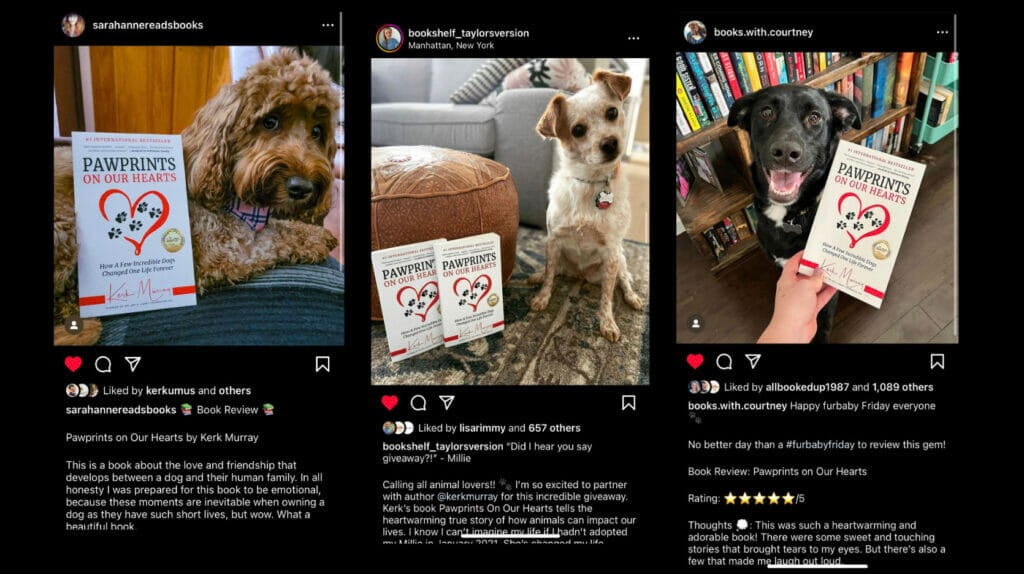
However, there is also the possibility that a well-known author or successful influencer would also write a review for a fee.
At this point, it’s crucial to ask yourself if you’re comfortable paying someone to review your book. While this is considered ethical in the publishing world, it is always the best policy to include honest reviews. While those honest reviews may come at a cost, it is important to make sure your editorial reviewer leaves a non-biased review.
How to use editorial reviews in your marketing
Editorial reviews can be used on the book itself or in a myriad of other places. Newspapers, Amazon product reviews, your book descriptions, your website, different parts of your book funnel, a blog or press release promoting your book, your social media, and even your book’s paid ads are all places to share editorial reviews.
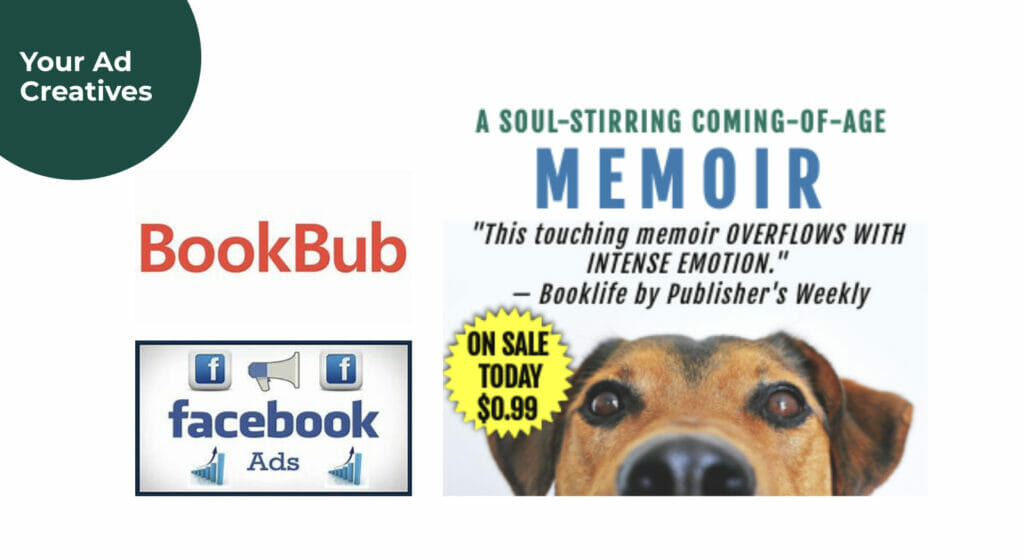
In fact, our authors and students have found that using editorial reviews as their Facebook ads for books had a huge impact on their book sales.
Here are some more ideas and things to consider when using editorial reviews in your book advertising.
Choose which review gets the best real estate
While all positive editorial reviews are helpful in their own way, there are differences in each review.
These should be considered when brainstorming the best place to put each review. If you obtained a review from a celebrity or influencer, you may want to put this editorial review on the front cover of your book, in your advertising, at the top of your Amazon book list, and on your book or author website.
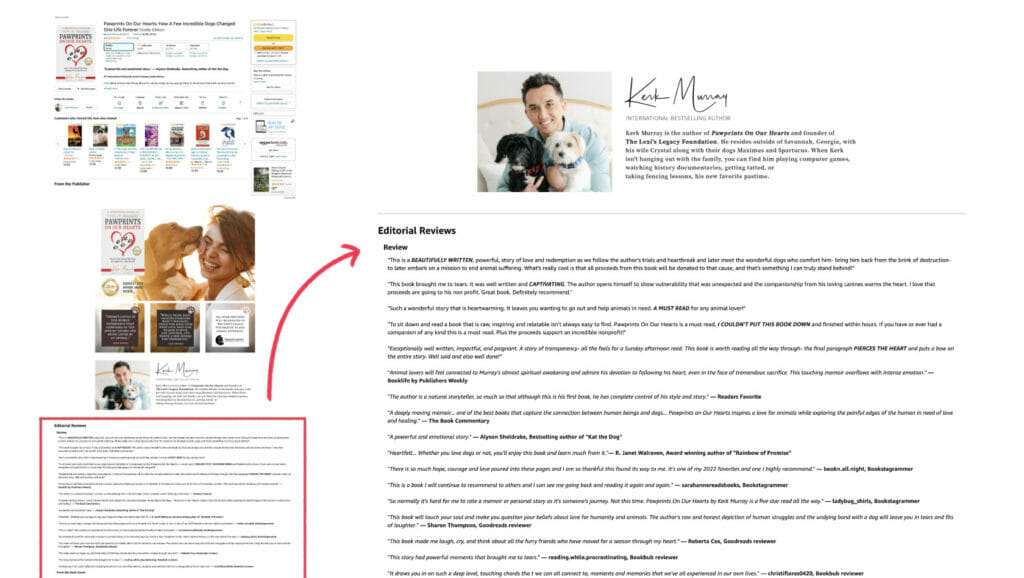
Meanwhile, the back cover, first couple of pages, and general social media posts (you can create a “reviews” playlist or Featured Story) are other places to share reviews you don’t want to go unnoticed. This is great for editorial reviews from lesser-known authors, readers, or professionals in the field for the places mentioned previously.
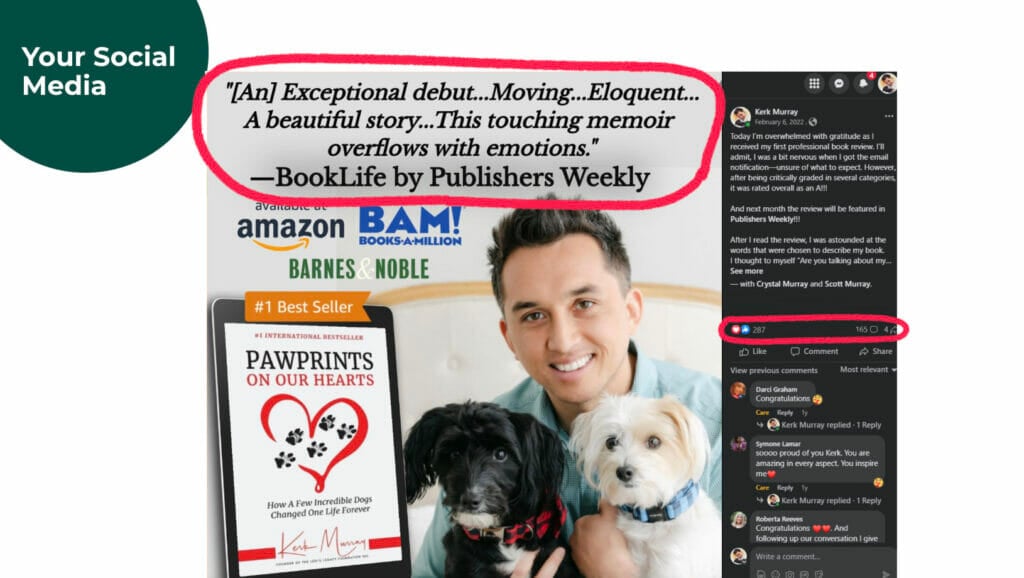
Wherever you choose to place your reviews, give them substantial thought and consideration. A well-placed editorial review could grab the attention of that potential reader’s eye and help them make the purchase.
Final thoughts: why editorial reviews are powerful for authors
Editorial reviews are powerful for authors because they establish the credibility of your book in a non-biased way.
Customer reviews are often subjective and based on the reader’s interpretation of your work. If they did not particularly like your writing style they may leave a poor review. This does not mean that you are a bad writer. It simply means they did not resonate with your writing as you hoped they would. It also does not mean another reader will not absolutely love your book and leave a glowing five-star review.
An editorial review is often more thought-out and nuanced than a general customer review.
After all, it should be left by someone who’s an expert in your field or genre. Take note that the term expert in regard to an editorial review is not always the same as the definition in the professional world.
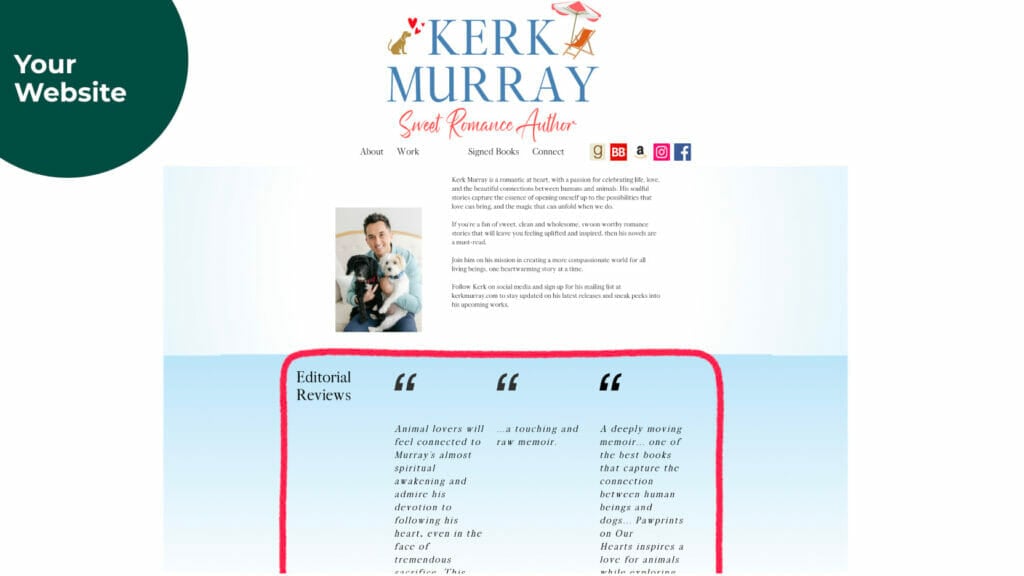
Finally, while editorial reviews are known for being non-biased, any review is likely to be subjective in some way. As you receive your editorial reviews, don’t be discouraged if they are not phrased exactly as you hoped. Every writer has a different way of reviewing books. It’s unlikely your editorial reviewers will do so in the exact manner you expected.
Remember that various well-crafted reviews (done in different styles and highlighting different parts of your book will likely resonate with different types of potential readers.
And that’s a good thing!
As you start your customer review journey…
The more invested you become in the writing industry the more you will realize how small it is. Writers know writers who know writers who know writers. This should be encouraging as you pursue reaching out to editorial reviewers. Keep in mind that if you ask somebody to review your book, you may be asked to review their book in the future.
Of course, not every reviewer who reviews your book will ask for the returned favor, but keep this possibility in mind as you reach out.
Enjoy connecting with different individuals and conversing with them about your book. You spent a long time writing it and now you get to spend time talking about it, getting others talking about it, and promoting it. Congratulations, and well done!

























